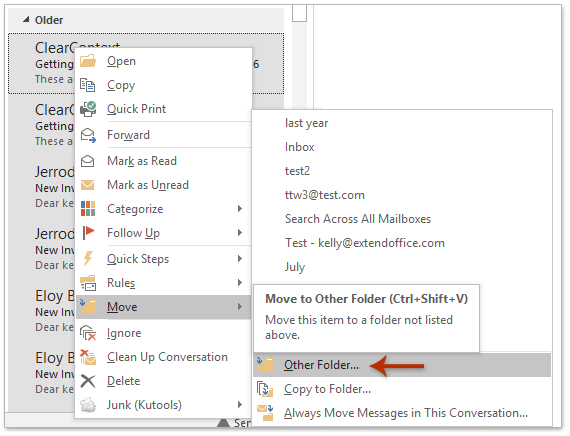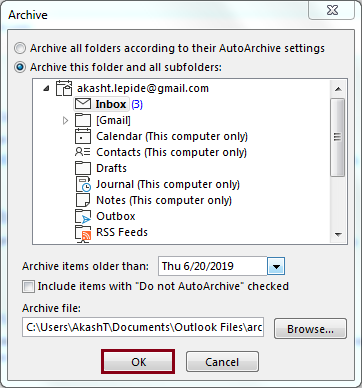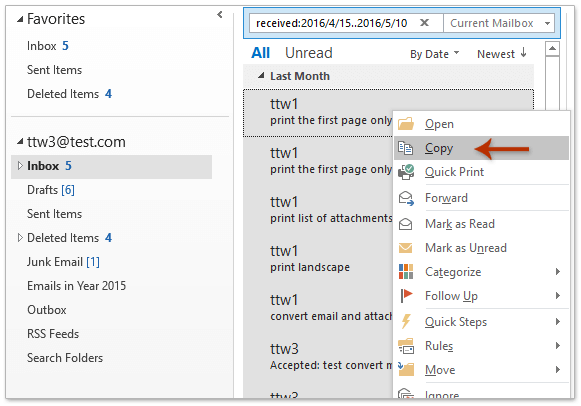

Once you’re done creating yearly archives, you might notice that your original pst-file still hasn’t decreased (much) in size. Step 3: Compact Now and updating your backup schedule You can use the Archive feature to split your pst-file. Make sure that this is a location on your local computer and not a network share.Įxample: D:\Documents\Outlook Files\2011.pstĪfter archiving has finished, repeat the above steps but specify a different date in step 4 and a different name in step 6.

Specify a name and a location for your pst-file for 2011 and previous.Optionally, check the option: Include items with “Do not AutoArchive” checked.So if you want to create your first archive for 2011 and previous, set the date to the 1st of January 2012. Set the “Archive items older than:” date to the 1st of January of the year after you want to create your first archive for.Click on the top level folder to select the entire mailbox rather than the currently selected folder.Select: Archive this folder and all subfolders.Now that Outlook is prepared, you can split your pst-file in the following way: The process to do this is described in the previous tip:Īrchive based on Received instead of Modified date Step 2: The Archiving process This way, you prevent emails which have been modified or imported after your archive date from remaining in your main pst-file. For more info, also see: How often do I need to use AutoArchive? Step 1: Set Outlook to archive by Received Dateīefore you start, you must configure Outlook to archive based on the Received date rather than the Modified date. Of course, the backup process will take a bit longer.

Note: The definition of a “large pst-file” is somewhat relative and on most systems having a pst-file of 4GB or even 10GB is no problem at all. To split it into yearly archives (or any other amount such as quarterly, or every 2 years), you can run the Archive process multiple times, each time to a new pst-file. Splitting a pst-file can be done via the Archive feature in Outlook. Is there any way I could split up my pst-file into yearly archives? As data will no longer change in these pst-files, I would no longer have to include them in my daily backups. To speed up Outlook and backup performance, I thought about splitting up my pst-file into multiple files. So far emails have been archived by the specified month (or year, date) already.For years I’ve been using the same pst-file with Outlook and it now has grown quite big (it currently is 5.6GB). In the popping out Microsoft Outlook dialog box, please click the Yes button. (4) Click the Browse button to specify file name and saving folder for the archive file ħ. (3) Type Tomorrow in the Archive Items older than box

(2) Click to select the new folder May in the below list box (1) Check the A rchive this folder and all subfolders option In the Archive dialog box, please do as below screenshot shown: Go ahead to click File > Info > Tools > Clean Up Older Items (or File > Info > Cleanup Tools > Archive). Now all search results are moved to the new Folder May. In the Create New Folder dialog box, please type a name ( May in my case) for the new folder in the Name box, select an email account in the Select where to place the folder list box, and click the OK buttons to close both dialog boxes.ĥ. In the Move Items dialog box, please click the New button. Note: You can select all emails in the mail list with selecting any email in the mail list and pressing Ctrl + A keys.ģ. Please select all search results, right click and select Move > Other Folder. Now all emails received in the specified month are found out in the mail list. (4) For searching emails by a certain date, says, please change the search criteria to received. (3) For searching emails by a certain year, says 2015, please change the search criteria to received. If you need to narrow the search scope and search emails in May of a certain year, such as 2016, you can change the search criteria to received. (2) received: May means search emails received in May of any years. Notes: (1) received: May means search emails received in May, you can change the May to other month name, such as Jan, Feb, etc. In the Mail view, type the search criteria received: May in the Instant Search box, and then specify the search scope in the Scope group on the Search tab. For example I need to archive emails received in May, I will show you the detailed steps to archive by the specified month/date/year in Outlook.ġ.


 0 kommentar(er)
0 kommentar(er)
